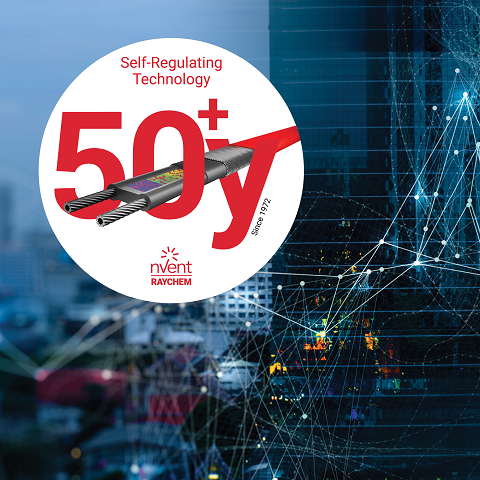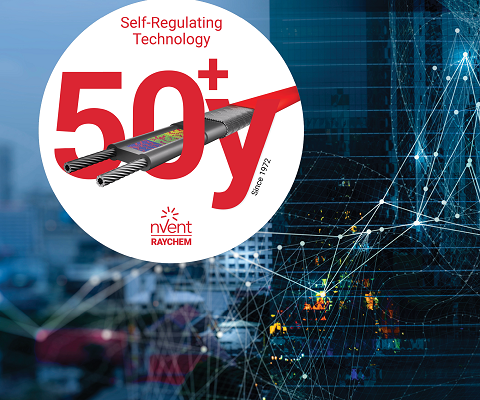Energy-efficient properties of self-regulating cable prevent burst pipes waste a lot of water and cause expensive damage, surface snowmelt reduces salinification, preventing roof and gutter damage with heat tracing prevents degradation.
In 1972, the Raychem Corporation (now a part of nVent) patented and launched the world’s first self-regulating heating cable. Since then, the company has sold and installed over 1.8 billion feet (550,000 km) of self-regulating heating cable all over the world!
Self-regulating heating cables are a highly efficient and safe method for applying heat in various applications such as freeze protection, process maintenance, and comfort. These advanced cables provide reliable solutions to prevent damage caused by burst water pipes, frozen roofs and gutters, as well as ice and snow formation on ramps, stairways, driveways, and walkways. Beyond their effectiveness in combating winter weather-related issues, self-regulating systems also offer a sustainable solution.
How do self-regulating heating cables contribute to sustainability?
Energy Efficiency
As the name suggests, self-regulating cables automatically adjust their output to the surrounding temperature. When the cable is energized, the conductive core produces heat. As the ambient temperature drops, the conductive core contracts microscopically, increasing its conductivity and, as a result, its heat output. As the ambient temperature increases, the conductive core expands microscopically, reducing its conductivity heat output. In this way, self-regulating cables produce more heat when it is needed and less heat when it is not needed. By combining self-regulating cables with advanced control & monitoring solutions, nVent RAYCHEM self-regulating systems deliver high performance and exceptional energy efficiency.
Improved Safety, Longevity & Easier Installation
Self-regulating cable won’t overheat, contributing to increased safety. Since self-regulating cable can be overlapped without risk of burning out, it offers improved longevity and is easier to install than constant wattage cables, further enhancing its sustainable properties. When self-regulating systems are used in surface snow melting and roof & gutter deicing applications, they contribute to safety by reducing slip-and-fall accidents and safety hazards caused by ice and snow falling from rooftops.
Preventing Damage & Downtime
Self-regulating systems are used in winter safety applications to prevent damage and in industrial temperature maintenance to avoid downtime. By making building operations safer, and industrial processes more reliable, self-regulating systems help to eliminate energy waste associated with fixing problems that these systems help to avoid.
Saving Water
One of the most common applications for self-regulating cable is pipe-freeze protection. Fresh water is one of our most precious resources. When frozen pipes burst, water waste and damage due to flooding are unavoidable. By preventing frozen pipes, self-regulating cables help to safeguard our water supplies.
Self-regulating cables are also used for surface snow melting and deicing. As an alternative to chemical deicers, self-regulating cables protect the environment against salinification, one of the most pressing threats to drinking water quality and the suitability of groundwater for irrigation.
Interested in learning more about how self-regulating heat tracing technology works? Check out this video!


